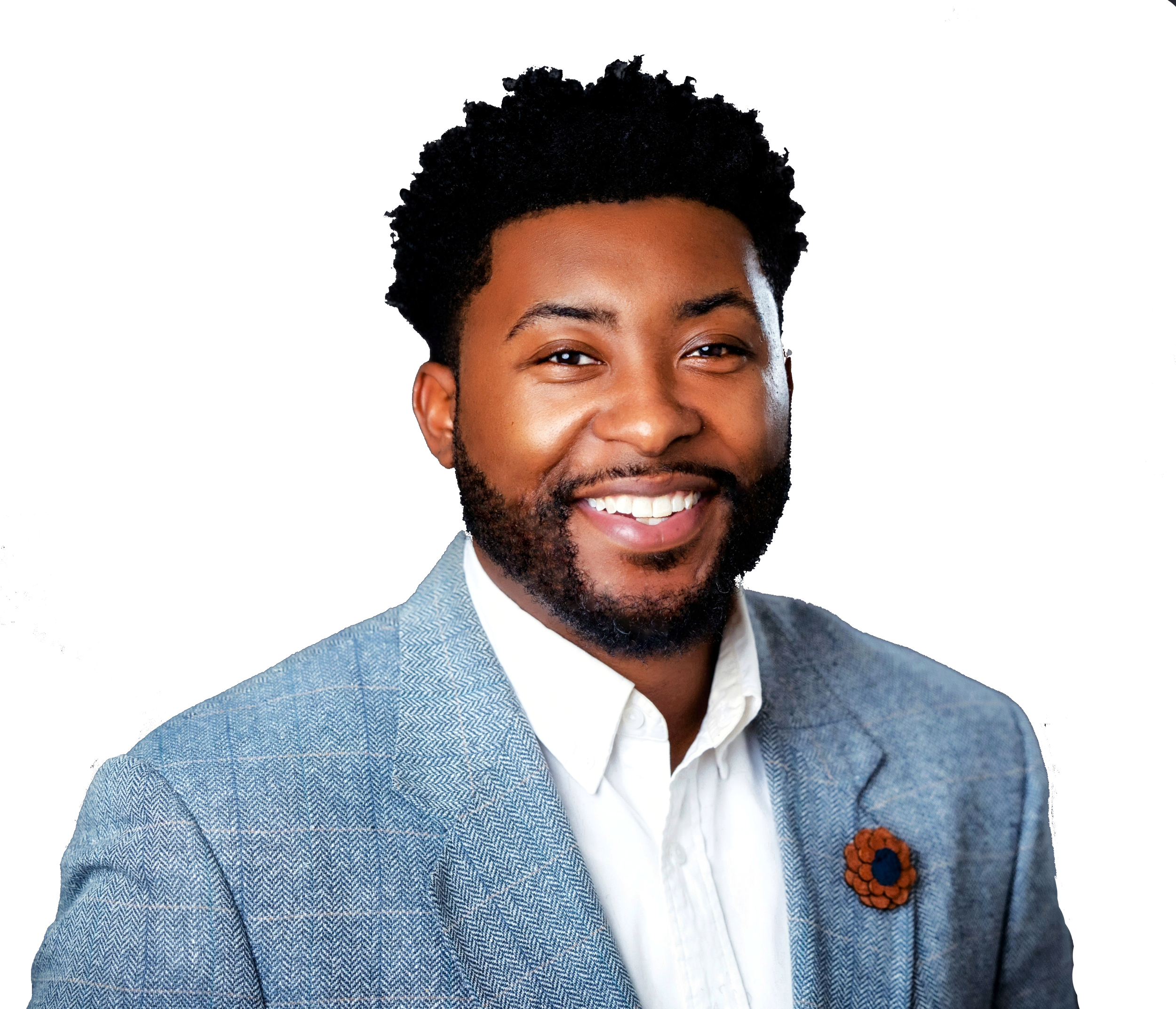
Vincent (Antonio) Brazelton Jr.
Plant Genetics and IT Software Management Expert with a Passion for Promoting Food Equity and Sustainability
Senior Coordinator of Research Partnerships, The Jackie Joyner-Kersee Food Agriculture Nutrition Innovation Center
PhD Candidate, Plant & Microbial Biosciences, Washington University St. Louis
Why Plant Science?
As a plant scientist, I exist in two worlds. In one world, I work among the nation's foremost experts in plant biotechnology, bioinformatics, and agronomy to create solutions that will revolutionize the global food system. From molecular breeding for improved host resistance in corn and soy, to WIFI-enabled harvesting equipment, I witness the power of next-generation agriculture daily. This is in stark contrast to the world I reenter on my commute home. In this world, the realities of food apartheid, urban blight, and nutritional health disparity grow more and more prevalent with each passing city block. Although conventional agriculture seeks to address this issue by focusing on increased food production, shifting the paradigm of food security will require training the next generation of scientists to incorporate systems-level solutions that reach across curriculums, communities, and cultures. Throughout the course of my career, working with underserved communities has impacted both the way I approach my work, and the way I think about preparing the next generation of scientists.
Recently on NPR: “In East St. Louis, collard enthusiasts are applying serious science to rare varieties”
Ask Antonio
-
I study root trait diversity in Brassica oleracea, better known as Collard Greens! Collards are a nutrient dense leafy green grown on urban farms and community gardens throughout the St. Louis metro region. Beyond their nutritional importance, they are also a significant cultural staple in many southern and African diasporic foodways.
As social and environmental factors continue to widen the food disparity gap across cities, it is imperative that we develop crops that are adapted to urban and low-input agricultural systems. Understanding the genetic diversity that exists in collard roots will help me work alongside urban farmers to select plant traits that are best adapted for urban crop production.
-
I was formally introduced to plant science during my junior year of high school. I was an REU student studying peanut transformation. It was my first-time seeing tissue culture and I remember thinking “This could feed the world!”. Since that experience, I’ve spent the last decade doing plant science work.
Over time, I’ve learned that feeding the world is as much about challenging the boundaries of technology, as it is about challenging the boundaries of the social environment that they exist in. The idea that my work can have a lasting impact on foodways continues to inspire me to do science today.
-
Plants are some of the most fascinating history books that we have! They house millennia of information about how different cultures, climates, and microbial interactions shaped the world that we currently live in. Plants are a phenomenal tool at the intersection of social and applied science. They scavenge for their own food, they clean the air, they provide us with medicine, and (most of them) taste great!
I think it’s pretty cool that I get to use plants as a resource to create solutions that prioritize food sovereignty, environmental sustainability, and improved genetic diversity for urban farmers and the communities they serve.
-
As a plant scientist, I exist in two worlds. In one world, I work among the nation's foremost experts in plant biotechnology, bioinformatics, and agronomy to create solutions that will revolutionize the global food system. From molecular breeding for improved host resistance in corn and soy, to WIFI-enabled harvesting equipment, I witness the power of next-generation agriculture daily. This is in stark contrast to the world I reenter on my commute home. In this world, the realities of food apartheid, urban blight, and nutritional health disparity grow more and more prevalent with each passing city block. Although conventional agriculture seeks to address this issue by focusing on increased food production, shifting the paradigm of food security will require training the next generation of scientists to incorporate systems-level solutions that reach across curriculums, communities, and cultures. Throughout the course of my career, working with underserved communities has impacted both the way I approach my work, and the way I think about preparing the next generation of scientists.
I was thrust into the role of connecting underserved students with resources for the first time after the murder of Michael Brown Jr. in St. Louis. As President of Iowa State’s Black Graduate Student Association, I was charged with creating safe space for students, faculty, and administrators to dialogue about the atrocities that had taken place in Ferguson, and how they impacted student life in Ames, Iowa. This experience taught me a great deal about advocacy, community organizing, and the limited scope of my traditional scientific training. For the first time, I connected the idea that the science I do should reach beyond “the bench” and be accountable for broader change. I got to practice this idea over the last five years as an employee at Bayer Crop Sciences
At Bayer I served on the ARISE leadership team – a resource group for employees of African descent. Our primary goals were to “promote cultural awareness, cultivate an inclusive environment, and engage employees around critical inclusion & diversity objectives”. In addition to supporting Bayer employees, ARISE also acts as a liaison between The National Black Growers Council (NBGC), and the Congressional Black Caucus (CBC). During the annual NBGC Model Farm Exposition, my colleagues and I spent a week deliberating with black farmers and policy makers to present tangible initiatives to be included as part of the “Justice for Black Farmers” Act. This experience allowed me to see the disparity that exists for black farmers despite being equipped with cutting edge seed technology. It also solidified my interest in mentoring the next generation of plant scientists to think more equitably about “who” benefits from the technology that they create.
I fell in love with agriculture because I saw a technology that had the power to feed the world. The last decade has taught me that feeding the world is as much about challenging the boundaries of technology, as it is about challenging the boundaries of the social environment that they exist in.
Talk to me about:
-

Topp Roots Lab
Root genetics and Phenotyping lab
-

New List Item
Description goes here -

New List Item
-

Square One
Description goes here
“Reading about nature is fine, but if a person walks in the woods and listens carefully, he can learn more than what is in books . . . .”
— GEORGE WASHINGTON CARVER

